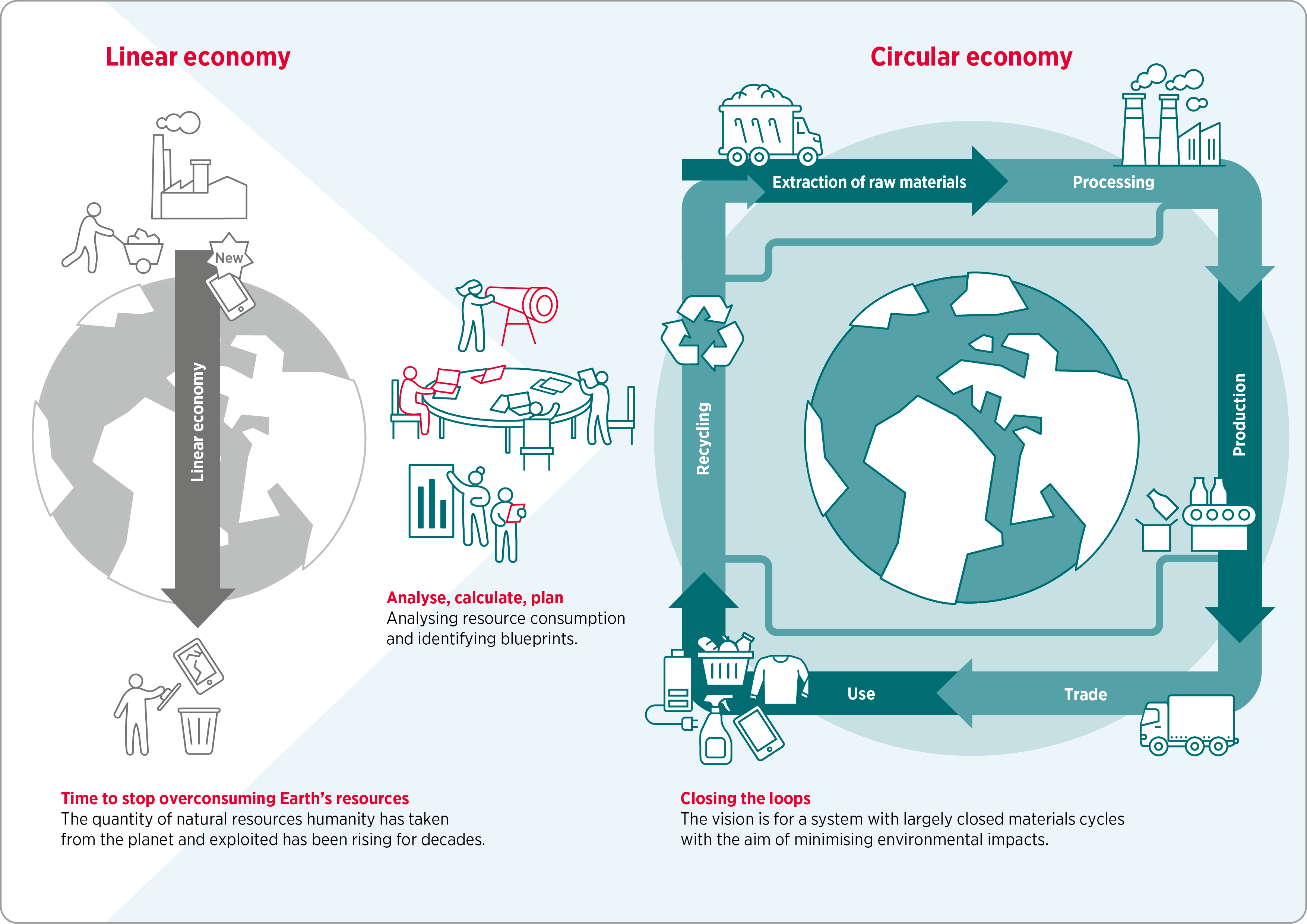CircularSystems
The Circular Systems Research Unit investigates how the consumption of resources can be reduced and materials cycles closed. The researchers take a systems perspective, carry out assessments and develop suitable blueprints.
People need resources in order to live. For decades, the amount we have been taking from the planet has been increasing, as have the associated environmental impacts. Earth Overshoot Day demonstrates just how much we are living beyond our means. It shows the extent to which human behaviour is putting pressure on the Earth's ecosystem and natural resources. In 1970, Earth Overshoot Day still fell in December; by 2019, it had already advanced to August. The conclusions are clear: in order to live within planetary boundaries, we must significantly reduce resource consumption – including environmental impacts.
The circular economy has a pivotal role to play here, from avoiding waste, maximising and prolonging the use of products and components, reusing and recycling to making widespread use of waste as a resource. These are key strategies for closing materials cycles. However, particular solutions for every raw material and every product are different.
The researchers at the Circular Systems Research Unit analyse how resources are currently being used and identify potential solutions. They develop the required evaluation concepts and models using methods such as material flow analyses and life cycle assessments. As part of their work, they also investigate the environmental impacts associated with resource use and determine what action needs to be taken.
Objectives
The research scientists' vision is a circular economy, i.e. a system with largely closed materials cycles, and a significant reduction in absolute resource consumption in order to minimise environmental impacts. To achieve this, the researchers at the Circular Systems Research Unit want to
- create system knowledge by mapping and modelling physical material flows, thereby identifying the associated environmental impacts, comprehensively analysing value creation systems and identifying areas of circularity potential,
- make target knowledge available by identifying solution spaces and developing achievable blueprints for circular systems and
- provide guidance by establishing certainty in terms of future direction for different stakeholder groups.
Key topics
In order to find out what form circular value creation systems should take, the researchers carry out (dynamic) material flow analyses and environmental assessments with different areas of focus, looking at individual products as well as entire sectors and economies. In particular, they examine the potential offered by circular approaches, how many resources can be used more efficiently and conserved, and where environmental impacts such as greenhouse gas emissions and land use can be reduced. The researchers analyse these points for individual raw materials, product groups, sectors and entire economies. Building on their findings, they formulate corresponding blueprints and indicators as benchmarks for a circular future.
The work of this Research Unit complements that of the Circular Transitions and Digital Transformation Research Units within the Circular Economy Division.

Publi-cations
You find all scientific publications on our publication server:
Projects
Here you can find projects of the Research Unit:
